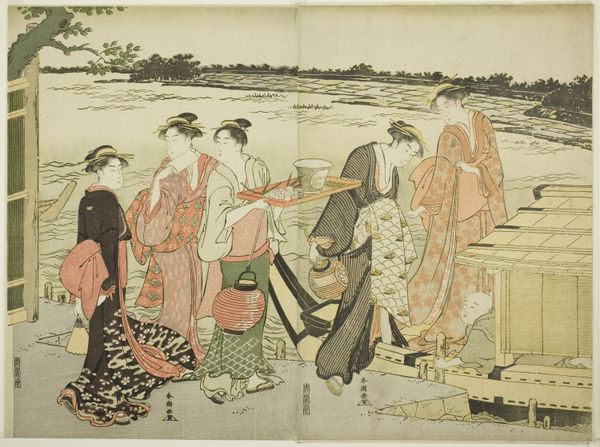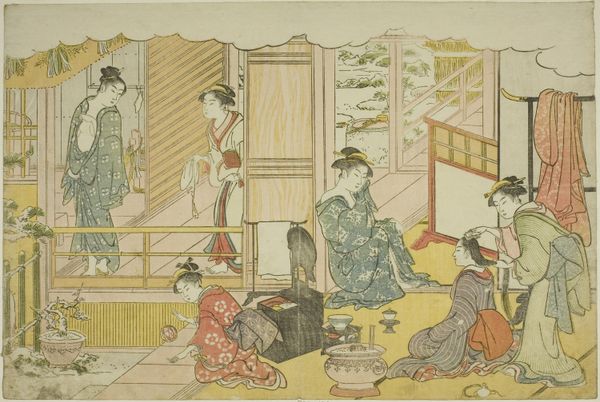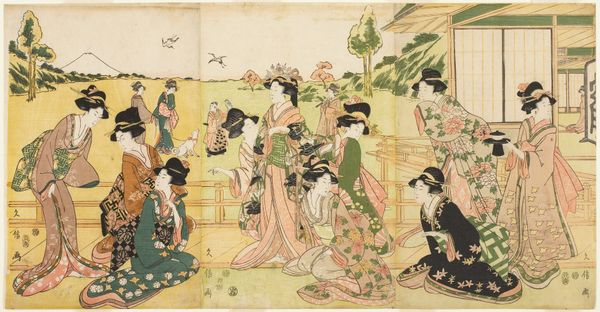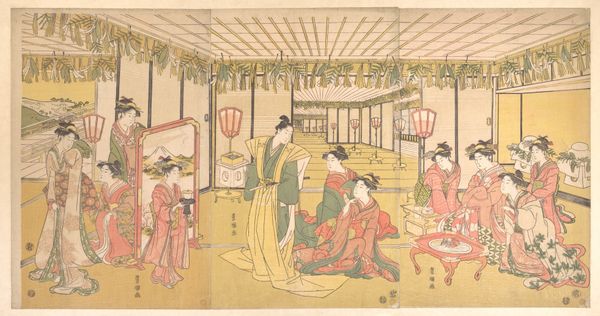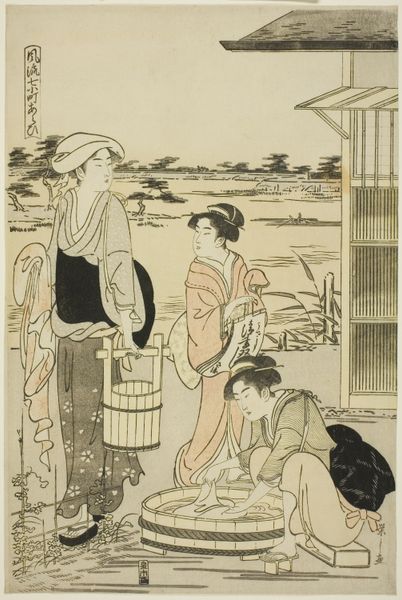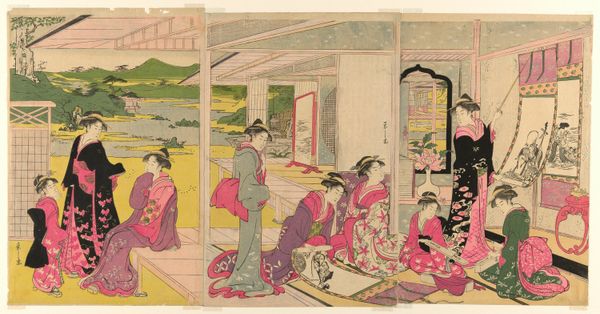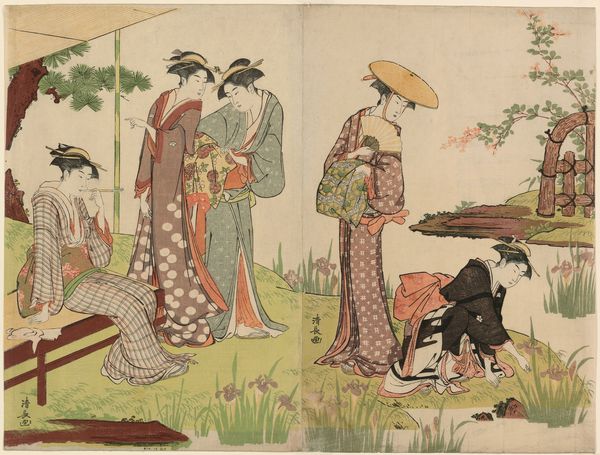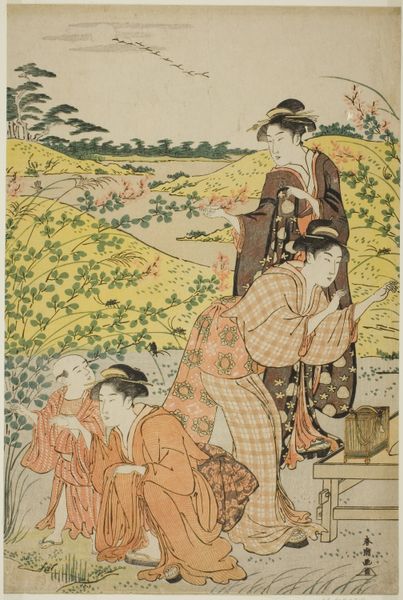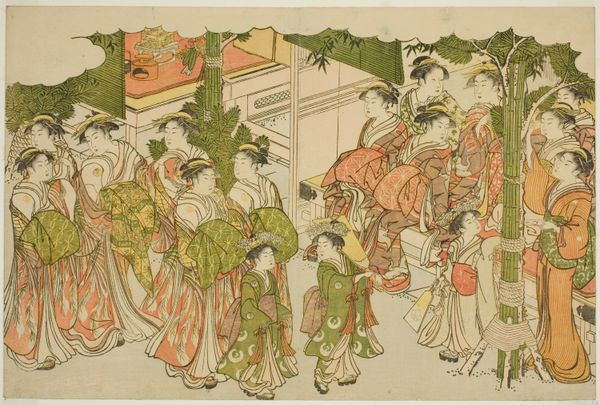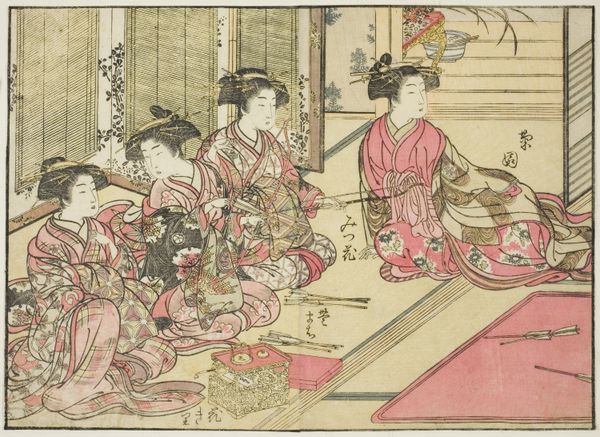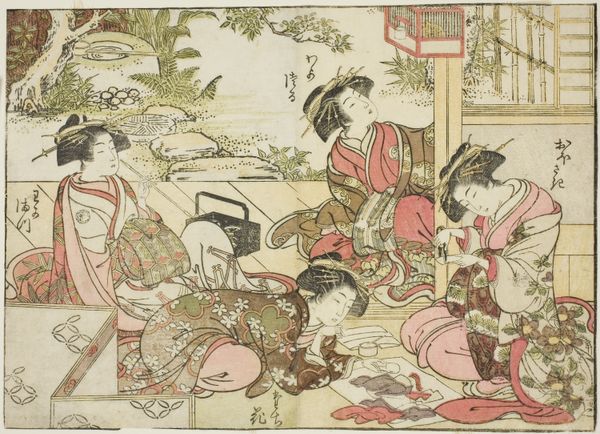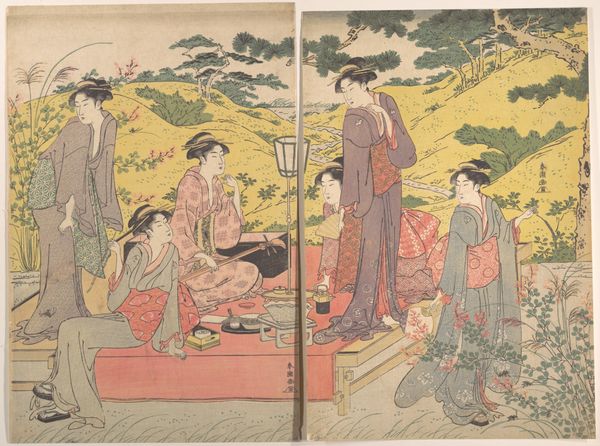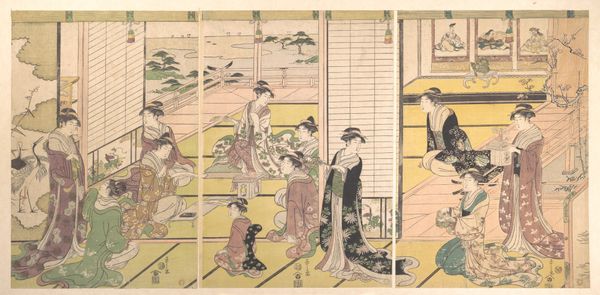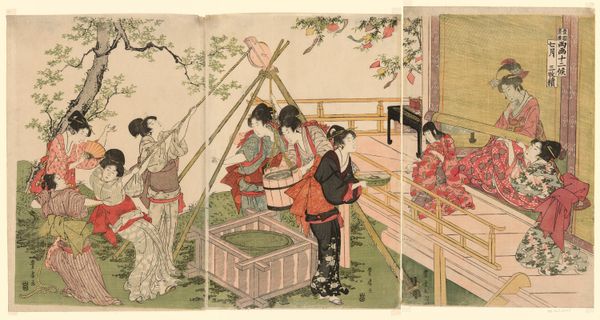
The First Horseback Ride of the New Year (Uma norizome), from the illustrated book "Colors of the Triple Dawn (Saishiki mitsu no asa)" c. 1787
0:00
0:00
print, woodblock-print
# print
#
asian-art
#
landscape
#
ukiyo-e
#
japan
#
figuration
#
woodblock-print
#
genre-painting
Dimensions: 25.3 × 38.1 cm
Copyright: Public Domain
Curator: This captivating woodblock print, created around 1787 by Torii Kiyonaga, is titled "The First Horseback Ride of the New Year" and comes from his illustrated book, "Colors of the Triple Dawn." Editor: It strikes me as incredibly peaceful, almost serene. The muted colors and the relaxed poses of the figures really evoke a sense of calm. What about you? Curator: I find it fascinating to consider the labor and artistry involved in its creation. Kiyonaga's workshop undoubtedly employed skilled block cutters and printers who meticulously translated his vision onto paper using woodblocks, which were then carefully inked and pressed. The production itself was part of the larger ukiyo-e print industry. Editor: And this print depicts a fascinating glimpse into Edo-period Japanese social life. We see what appear to be upper-class figures, mostly women, observing what seems to be a ceremonial first horseback ride of the new year. The print gives a wonderful peek into their leisure activities and their social interactions. Curator: Absolutely. The subject matter, the materials—wood and paper—and the techniques used all speak to the social context from which this image emerged. The way it captures a moment in time connects with broader trends in the circulation and consumption of art in Japanese society during that period. Editor: Indeed, the very act of creating these prints democratized art in a way, making beautiful images available to a wider public than traditional paintings ever could. The print became a powerful medium for portraying contemporary life. Think about the distribution networks required to make them available on a large scale, an efficient infrastructure which facilitated visual art consumption and appreciation for ordinary Japanese. Curator: The Art Institute of Chicago's display of the print provides insight into the role museums play in assigning cultural value and defining how we now see traditional practices or artistic forms that were made in very different ways. The print itself represents labor—the labor of many hands—and its survival and eventual enshrinement here speak to processes of preservation and re-interpretation across centuries. Editor: Looking at "The First Horseback Ride," one appreciates not just its aesthetic beauty but also how it offers insights into societal values, rituals, and the material conditions that facilitated the dissemination of such artwork. It feels like opening a window into a carefully curated moment from a very different world. Curator: I agree. Its continued accessibility allows viewers to connect to historical, societal processes of earlier eras—an example of production that connects both artistic skill and widespread access through materials which can still inspire centuries after creation.
Comments
No comments
Be the first to comment and join the conversation on the ultimate creative platform.
